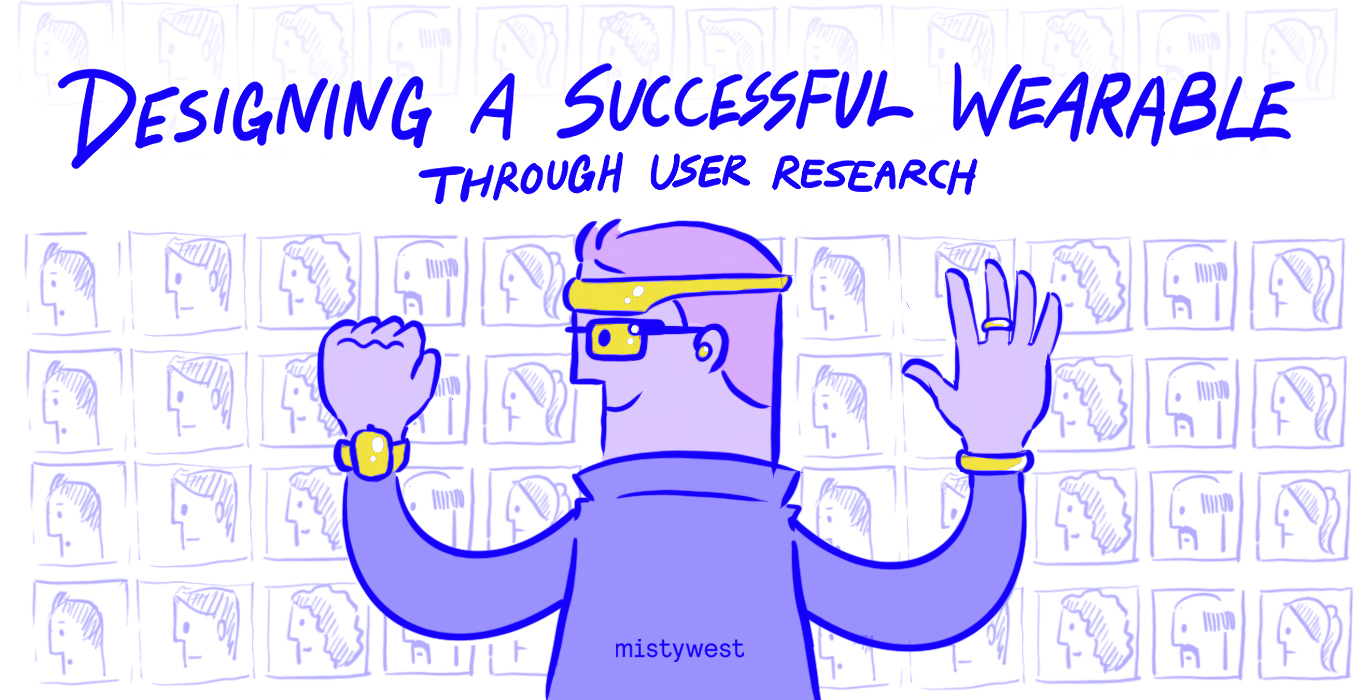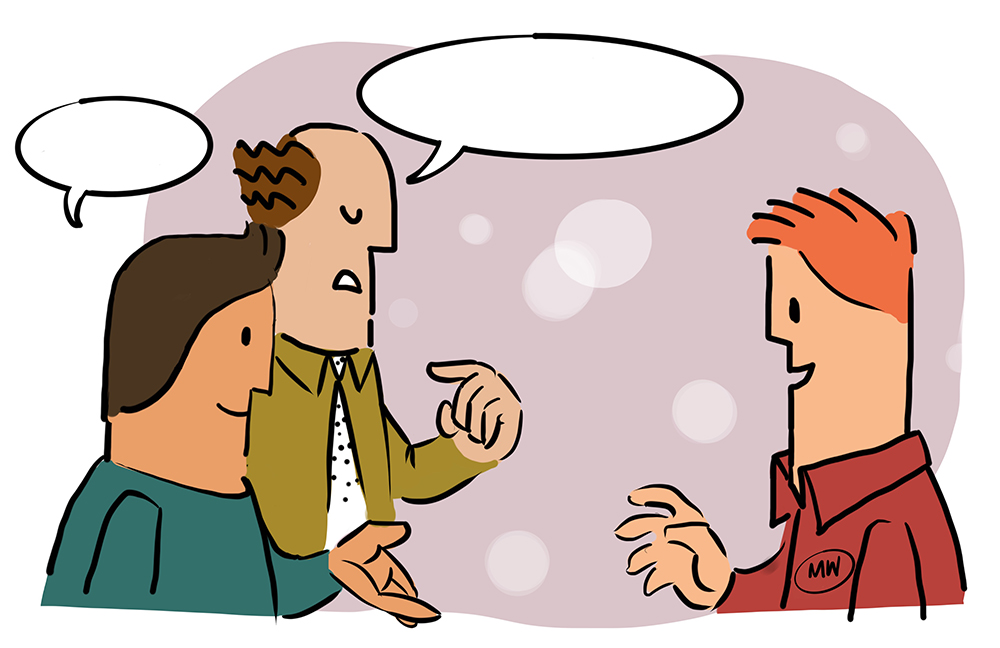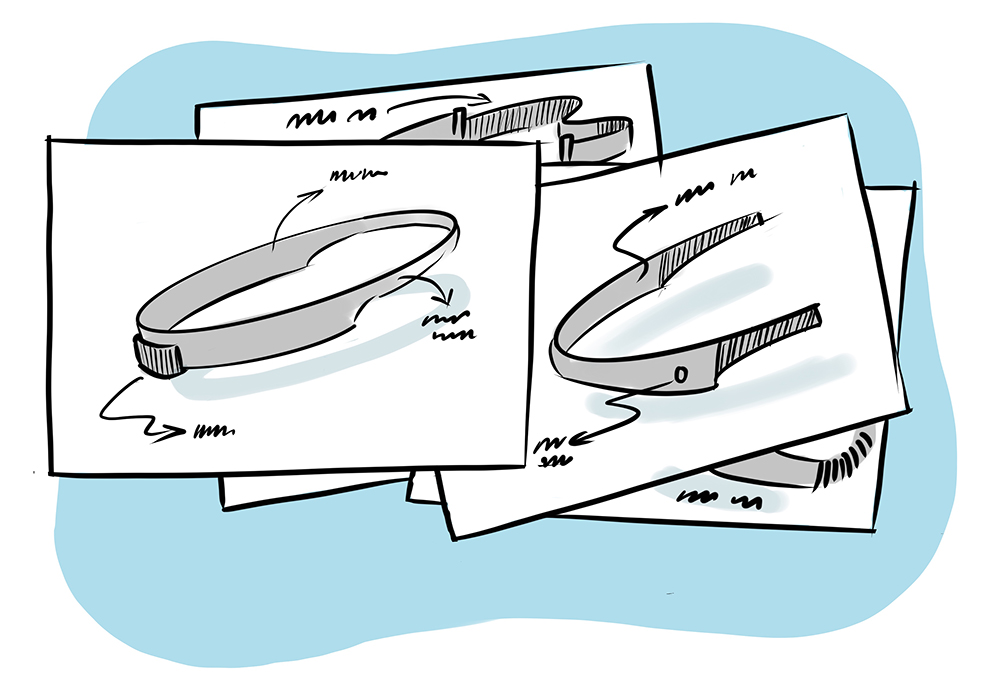
BLOG
Designing a Successful Wearable Through User Research
Product development that is driven by design and technology, and not user experience, has led to the creation of products that failed miserably in the market. Google Glass, Oakley Thump, and Ring are all examples of wearables that were either unfashionable, not ergonomically designed, or breached user privacy – leading to commercial failure and embarrassment for their creators.
As a hardware product development consultancy, MistyWest has seen many client products go to market. No matter how much a client loves their hardware product, if they fail to conduct sufficient user research or prioritize the user experience, they risk developing a device that does not meet user requirements – and nobody will want to buy it.
![]()
MistyWest follows the 5 step Design Thinking methodology for product development, with a focus on involving users at each step of the process to create human centered designs that address their real needs and problems. In this blog post, we describe the various research methods employed in the first step of Design Thinking – all of which are indispensable tools when it comes to developing next generation IoT products like wearables for enterprise and personal usage.
Core questions that need to be answered for a wearable to be successful
User research for wearables is uniquely different from other products; a wearable is not a standalone product that a user interacts with at a distance, but something that resides on and becomes part of the user’s body. This important distinction from other devices throws unique challenges into the wearable development cycle, which user research can address by investigating answers to the following critical questions:
1. Besides being optimally invisible, wearables should also seamlessly blend in with existing user behaviour; they should not require users to learn new ways of doing things. What are the user behaviours and how will that dictate wearable product design and usage?
2. As much as the technological aspect of a wearable is important to its success, so too is its fashion component. They are supposed to exist as a reflection of users’ perceived selves, to show their status, and to leave a first impression. Users might be conscious of how they look while wearing the device. What product ‘forms’ are acceptable/unacceptable to the user and why?
3. Considering a wearable stays on the user’s body for a long duration, it could lead to ‘comfort/feel’ issues. What does ‘comfort’ mean to such a wearable user?

4. One wearable design could be used by a global audience – look no further than the Apple Watch. What data set needs to be considered for the right ‘ergonomics’ that addresses users’ ‘fit/shape’ issues?
5. Wearables could be worn in most favourable to most harsh environments. How will environmental variables such as temperature, sweat, or dust affect a user’s interest in wearable usage?
6. Besides physiological impact, wearables also pose psychological impact on the user. Wearables track body vitals and hence, distribution and ownership of captured personal data could lead to user concerns. What are the perceived concerns over personal data, how serious are they, and how will they impact the product adoption? What can be done to mitigate this?
7. Evaluating the experience (during the testing phase) with a user can feel more personal and invasive than traditional methods used for non-wearable products. How can we make ‘testing’ non-invasive in order to gather the purest form of user feedback?
Empathize with your product’s users
“Empathy is at the heart of design. Without the understanding of what others see, feel, and experience, design is a pointless task.” —Tim Brown, CEO IDEO.
The most fundamental reason for doing user research is that it’s the only way to achieve an understanding of the people who are going to use your design. If you understand the users, you can make designs that are relevant for them. A design that is not relevant to its target audience will never be a success.
The core of the Design Thinking methodology is to empathize with users. This involves getting into the shoes of the user to unearth their pain points, aspirations, unmet needs and behaviours. Empathy is rightly (and ideally) placed right at the very beginning of a project as it allows for the discoveries of the potential user needs that might exist as blind spots – for both the users and the client.
MistyWest’s user research process
As a use case, let’s refer to a recent commercial head-worn wearable project at MistyWest and how we used an empathetic approach to unearth user needs.
1. Secondary Research
To utilize existing knowledge, find information gaps and map out the new research process, MistyWest kicked off the project with some secondary research, which included a workshop with the company’s experts and stakeholders. Each already had considerable understanding of their users, but the workshop revealed gaps in knowing the precise user pain points, indicating the need to conduct primary research for a deeper investigation.

2. Sacrificial Concepts
Desktop research on existing/similar products and users helped our team generate hypotheses around the user needs, which sparked a few preliminary ideas for the researcher and our designers, who helped visualize such ideas that could be later showcased to users during field research. The objective of creating sacrificial concepts is not to evaluate or shortlist them as a design concept, but to simply use them as visual stimulus material. This helps to understand users much better when they share their responses in terms of likes/dislikes, relevance, etc.

3. Screeners & Discussion Guide
Before conducting primary qualitative research, we identified screening criteria to select the research participants. We chose to speak with a total of 12 respondents; an equal mix of current and potential users of the wearable, who represented various working environments, age groups, ethnicities, jobs profiles and shift durations. The researcher created a discussion guide with relevant questions to help unearth user pain points, behaviours, aspirations and unmet needs – with the inputs/suggestions from all the project stakeholders – including designers, engineers, and clients.

4. Primary Research
After recruiting the 12 users using the screener, we conducted one-on-one 60 minute interviews using the discussion guide. Half of the users were studied using their existing head-worn wearable in their natural work environment. We also applied a shadowing technique where the researcher studied the users’ natural behaviour in their work space to capture the user journey. The interviews and contextual learning helped identify underlying issues with the existing product and gathered user expectations for the next version of the product.

Our clients not only rely on MistyWest for great industrial and engineering design, but also for user research that lays down a solid foundation for a great wearable product right from the start. With 3 critical verticals like user research, industrial design and engineering design under one roof, we can ensure crucial project learnings do not get lost in translation as the project transfers from one vertical to another. Our unique value proposition helps guide our clients to making the right decisions for their business and to designing a successful wearable product that will meet user needs as well.